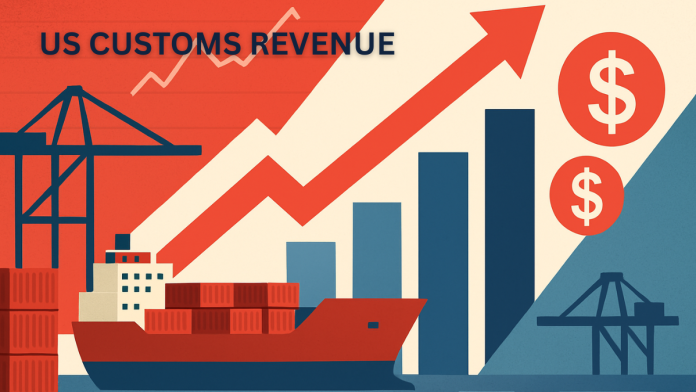The United States, known for its open trade policies and low average tariffs, is now seeing a sharp turn in direction. Recent tariff hikes under President Donald Trump’s trade strategy have pushed the country’s effective tariff rate to a surprising 17%. While average rates may still appear low on paper, additional duties on specific goods from countries like India, Brazil, China, and South Africa have dramatically increased the real cost of imports.
At the same time, the US customs revenue has soared, crossing the $30 billion mark in July and on track to hit a massive $50 billion. This surge has caught the attention of global trade analysts, especially as some countries now face extra tariffs of up to 50% on key goods.
Extra Duties Push Tariff Rates Much Higher
Though the United States had an average tariff of just 3.3% in 2024, this number does not reflect the new trade reality. Recent reciprocal actions have added more than 10% extra duties on most countries. For India and Brazil, the increase is even more dramatic — an added 50% on many goods.
Switzerland’s economy reels as U.S. slaps brutal 39% tariff on watches, chemicals and technology
As a result, the effective tariff rate for all countries has risen to 17%, according to Fitch Ratings. For India, which already faced a 20.8% effective rate before August 27, the pressure is now even higher.
The impact is being felt across a wide range of products. For instance, peanuts in shells — previously taxed at 54.6% under Most Favoured Nation rules — will now face nearly 105% in total charges when coming from India and Brazil. Similarly, peanut butter is subject to a 44% levy, while certain types of footwear are now hit with duties as high as 375%.
India, Brazil Among Worst-Hit by Tariff Wave
Countries like India and Brazil are at the center of these new tariff hikes. Though India has often been labeled the “tariff king” due to its own high import taxes, is now being met with some of the steepest charges from the United States.
According to WTO data for 2024, India’s simple average duty stood at 16.2%, including a high 36.7% on agricultural products and 13% on non-agricultural goods. Although the February Budget was expected to ease some of these rates, Indian exports are now encountering even tougher obstacles in the US market.
Several everyday products from India are being hit hard:
- Women’s trousers and tracksuits: taxed at 28.2%
- Boys’ trousers and bovine meat: duties between 26% and 27%
- Dates, apricots, and dried onions: around 30%
Some goods like wristwatches face complicated tariff systems, mixing fixed charges with percentage-based duties. This makes the final cost difficult for exporters to predict.
Customs Revenue Explodes to Historic High
One of the biggest effects of these rising tariffs is the record customs revenue collected by the US government. In July alone, customs brought in $30 billion, and the total is expected to touch $50 billion — nearly twice India’s projected customs revenue for the fiscal year 2025–26.
The huge jump in income is directly tied to higher taxes on imports, especially from key trade partners like India, Brazil, and China. With such steep levies now in place, the government is collecting more revenue per shipment — even if the number of goods being imported doesn’t go up.
This sudden rise has made customs duties a powerful revenue tool, changing the role tariffs play in the US economy. Once mainly used to protect local industries, they are now also generating billions of dollars in cash for the government every month.
